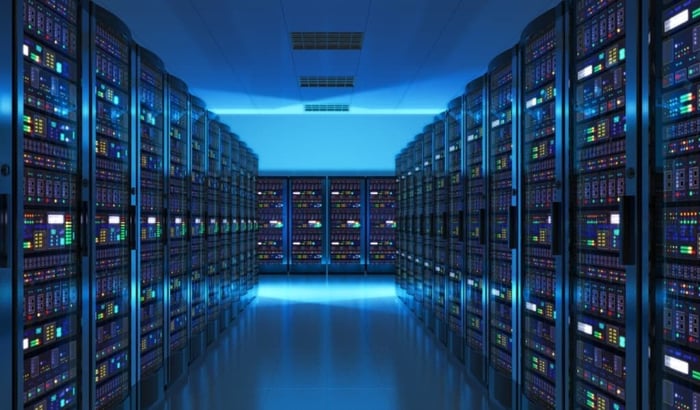Data centers must guarantee 99.8% server uptime to their customers. This means data centers must do everything to keep the servers up and running - from regular maintenance to sufficient cooling even at the critical moments when temperatures outside are rising. The hot summers of recent years have proven that the existing cooling machines in many data centers are not equipped for the changing climate, as extremely high temperatures are no longer an exception. The machines struggle to provide the required cooling capacity under the new temperature peaks and occasionally fail. Combined with imposed restrictions on energy consumption, this is a nightmare scenario for any data center. This blog takes a closer look and also offers a solution to this common problem.
Sever reliability as the biggest concern
The reliability of the servers is the most significant concern for any data center. The chillers must ensure this reliability. Many data centers are more than five years old and need to last for years to come. However, the cooling machines in these data centers cannot handle the high outdoor temperatures of recent years. Replacing the older cooling machines with new cooling machines with more power to guarantee optimal operation at extreme temperatures can be a solution - at a high cost. In addition, these heavier chillers consume much more energy, which is not an option for many data centers. More about this below.
"We regularly receive calls from data centers running around with sprinklers and hoses or even hiring a whole crew of people to keep the chillers cool to avoid downtime. This isn't only bad for the machines, but also extremely expensive."
Under an environmentally conscious magnifying glass
Data centers are large consumers of electricity and are therefore under a magnifying glass given the current sustainability requirements imposed on companies. In addition, local and regional governments often impose restrictions on the energy consumption of data centers. This, in turn, has consequences for the maximum peak power that is sometimes required to guarantee the total server capacity of a data center. Energy is not free for data centers either. Furthermore, there is growing awareness that the centers need to be more efficient with power consumption.
PUE (Power Usage Effectiveness)
A PUE of 1.5 was quite average; the aim is to come to a PUE of 1.05. PUE represents the ratio between the total power consumption of a data center and the power consumption of the computer equipment itself. If 150 watts of power is used in a data center to power a 100-watt server, then the PUE is 1.5. The 50-watt difference is used for facilities such as cooling systems. In a commercial data center, the PUE varies between 1.2 (data center less than one year old) and 2 (data center more than five years old) or even more than 2 (this applies to many server rooms within companies). In a data center, you pay as a customer based on these 100 Watts. A data center with a low PUE can therefore offer a lower price per kWh to its customers.
Co-locations, where data from third parties is processed/stored, prefer to use chillers to meet the desired precise cooling requirements.
Companies that use data centers for processing their own data allow a slightly larger margin in the desired temperatures to keep the servers functioning. They then often opt for adiabatic cooling to achieve the lowest possible PUE and significantly less energy usage.
Kill two birds with one stone with adiabatic precooling
Fortunately, there is an efficient and sustainable solution for optimizing existing and new cooling systems. Installing adiabatic precooling in front of the cooling machines increases the reliability of these machines and reduces the overall energy consumption. The precooler ensures that outside air is cooled by direct evaporative cooling before it enters the condenser. As a result, the cooling machines themselves do not have to work as hard to reach the desired temperature; the peak current is drastically reduced, and the risk of failure is eliminated.
The PreCooll - Oxycom's adiabatic precooling
The PreCooll, Oxycom's adiabatic precooling system, is an easy-to-install modular system that can be installed in front of any air-cooled chiller. Because PreCooll's evaporation media is made not of cellulose but aluminum, the system has a much longer shelf-life than other precoolers. The optimal pressure drop ratio of the PreCooll is extremely low compared to cellulose evaporation media. The evaporation efficiency regarding the absolute humidity is 91.9%, at 44 Pa, 2 m/s. The low resistance does not cause any disturbance to the chillers themselves.
Get adiabatic precooling installed for your data center now. Schedule a no-obligation consultation to determine what adiabatic precooling can do for your data center.





